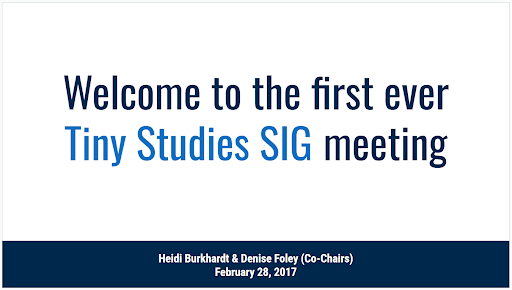Strategic Work in a Large Library
The University Library at the University of Michigan has over 420 non-student employees and over 250 student employees. Our library is divided into several large divisions, and is further divided across several buildings and roughly 40 departments. When the library rolls out a new strategy (or a change in strategy), some challenges presented by the size and structure of the organization include getting accurate information to everyone, giving people a chance to share ideas and questions, and providing support for those doing the relevant work.
One area of strategic work in the library is assessment; not only do we use assessment to inform other strategic work in the library, we deploy assessment activities themselves in strategic ways. How can we support truly strategic assessment in our large library, where people within many different departments engage in assessment work of one kind or another?
This question connects directly to a key tenet of our assessment strategy: when collecting data on an issue (e.g. instruction, cataloging, public spaces), we look across the organization to see which colleagues or departments might have similar questions, do connected work, have existing data, or would also benefit from new data. But in our context, how do we create the needed scaffolding, so that those doing or planning assessments don’t have to worry about missing important connections in the organizational landscape as they design studies and gather, interpret, and act on data? This is where the library’s Assessment Special Interest Group (SIG) comes in!
The Benefits of an Assessment SIG
The Assessment SIG was founded in 2017 -- as the Tiny Studies SIG -- by assessment and planning superstars Heidi Burkhardt and Denise Leyton (see the very first Assessment SIG slide from the very first SIG meeting in the image below!).

The Assessment SIG is still going strong, nine years later! The SIG is a relatively informal group that people can join simply by adding their name to the group’s MCommunity list. The group currently has 94 members, and it includes library employees from all three U-M campuses. The group is led by rotating chairs, holds hybrid meetings three or four times per semester, and draws 30 to 100 people to its meetings. Meeting attendance varies by topic, and library employees who are not on the SIG list are always informed of meetings and are welcome to come.
Below are some fictional examples -- inspired by reality -- of how the Assessment SIG facilitates strategic assessment:
- An assessment practitioner has an idea about using proxy server data to create helpful, discipline-specific lists of most-read articles for library users. People in the Assessment SIG provide their ideas about privacy considerations, data limitations, and others in the library and on campus who should be in the loop, thus setting the practitioner on a more informed and connected course of action.
- Groups of assessment practitioners in Divisions A and B both provide library consultations to students, faculty, and staff. One division uses a standard feedback form to collect assessment data on their consultation practices, while the other division does not have a team-level approach to collecting feedback. SIG attendees from both divisions first hear a guest presenter from another university talk about that institution’s library-wide approach to assessing desk and consultation services. The cross-divisional conversation then turns to sharing ideas about: methods for gathering data from U-M consultation users, specific questions that are important to ask, and ways to report on the data that feel accurate, useful, and sensitive to service providers.
- Assessment practitioners on all three U-M campuses come together to discuss effective ways of recruiting participants for assessment studies. In the conversation, people share useful tips and experiences (e.g., maintaining/sharing a list of people willing to be contacted about studies, how to use incentives effectively and ethically). Further, people identify ways that some planned assessment projects might be combined, avoiding the phenomenon of multiple groups working hard to recruit participants for separate assessment efforts.
- During the height of the COVID-19 pandemic, assessment practitioners gather in a Zoom-based SIG meeting to discuss how to continue with assessment during the pandemic. Ideas are shared about using remote-friendly methodologies to collect new data (e.g., virtual focus groups) and using existing data to answer new questions. People leave the meeting feeling less isolated and excited to try new things.
These are just a few examples of how people who practice library assessment can do their work more strategically, and with more support, via participation in the Assessment Special Interest Group.
The Limits of the Assessment SIG
The Assessment SIG is a strong but relatively informal group. The group does not have a conduit to Library Administration, which is the team of leaders responsible for setting the larger strategic direction of the library. Further, the Library Administration team rarely seeks out data being collected by Assessment SIG members; even, surprisingly, when the data in question are collected under a Library Administration charge (e.g., there was not a strong connection between the Library Administration group and the 2023 Campus Survey Team it charged).
Although the Assessment SIG can empower, support, and connect assessment practitioners across divisions and campuses, the structure of the SIG cannot ensure that assessment work is properly connected to the strategic work of library leaders who do not view assessment as relevant to their decision making. This represents a kind of upper limit on the impact of the Assessment SIG. Even when an assessment project is needed and is carried out skillfully and strategically, the impact of the resulting findings is sometimes blunted or lost altogether if the involvement and support of library leaders is needed, following data collection. Perhaps this conundrum is a topic for a future Assessment SIG meeting!